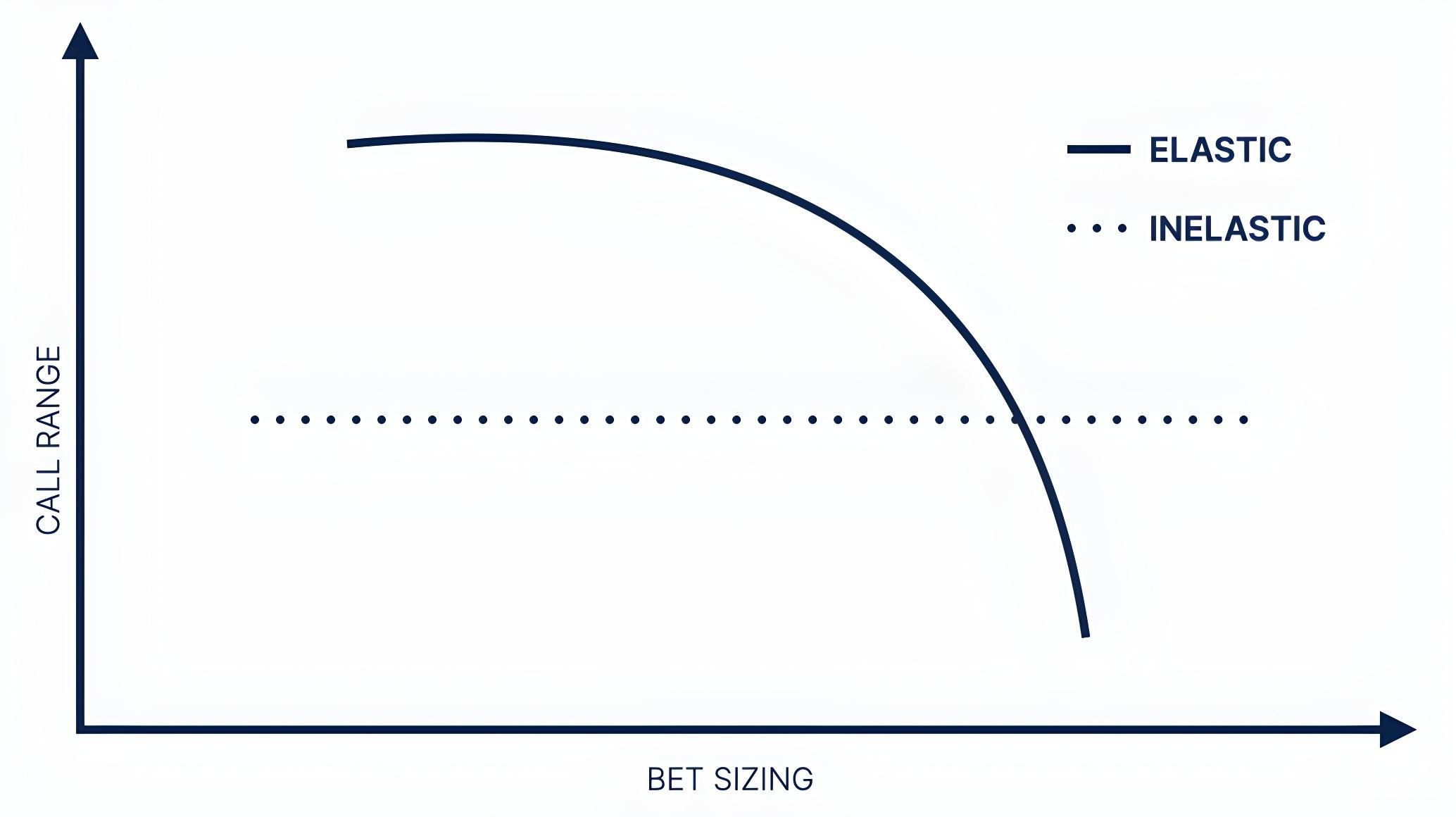Translated with the help of AI. We apologize for any errors and would appreciate your help in correcting them.
The material is based on the original article: pekarstas.com
ordering the educational portal university.poker
1. Velho Beta value
Let's quickly refresh the strategy of light counterbets. Against the reg players, we strive for a balanced bet sizing, using a single bet size for the entire range. Against phishes, we can act more exploitatively, adjusting the sizing depending on the strength of our hand. Phishes are simply incapable of a subtle counter-exploit.
This means that against the reg players we adhere to the standard approach, but against the fishes it is profitable to increase sizing on the value.
This is especially true when we need to inflate the pot without fear that the width of the call range will somehow change. Fish like to call counterbets even with a minimum hit in the board, but at the same time they are willing to fold, if they are not hooked at all. Thus, we simultaneously save on light counter-betas and squeeze the valley out of strong hands as much as possible. This approach may seem rustic, but it remains the most effective against recreational opponents. When playing with shortened effective stacks, it is important to take into account not only bet-sizing, but also the number of streets that will be required to stack-off. Competent betting planning allows you to form a pot of the right size, avoiding a situation where small or, conversely, too large overbets remain on the river.
2. Elasticity and bank construction pot
Let's recall an example where Hiro made a critical mistake by waiting for one of the streets. This small miscalculation seriously affected the final size of the won pot.
It is important to understand that the pot does not grow linearly, but exponentially. The slightest shortfall on the flop or turn can cost us a significant value on the river.
Therefore, against fish, you need to purposefully inflate the pot, not limited to standard bet sizing designed to play against reg players. Some players initially resist this approach: “But I don't want to knock him out of the pot!”. To dispel this fear, I explain to them the concept of band elasticity.
Elasticity is a characteristic that shows how much the range of an opponent's call changes depending on the size of our bet.
- Elastic range is sensitive to bet sizing: the higher the range, the more call range.
- The inelastic range is virtually unchanged from the size of the bet.
Different factors affect the elasticity of the range, but first of all it is important to understand the behavior of the fish. They love any hits on the board – top pairs, firewood, even second pair on the early streets. Moreover, they are not inclined to fold, even if the bet is significantly higher than the average. When my students are worried that the fish will fail, and they "miss the action", I give them this argument.
The range elasticity plot shows that:

- With an elastic range, an increase in bet sizing leads to an increase in fold equity.
- With an inelastic range, you can safely bet larger on the value without fear of knocking out an opponent.
Most ranges of players are somewhere between these extremes. However, fish range is overwhelmingly prone to inelasticity.
What does this mean for us? If we do not inflate the pot with a strong hand against the fish – we make a serious mistake by losing EV. Fish are willing to pay regardless of sizing, so adding 1-2 BBs won't change their decision. Don't be afraid to miss out on action. The long-term benefit of building large pots against weak players far outweighs the possible moments when they still fall. You can't retrain them to play better – but you can get them to put even more trash money into the pot.




